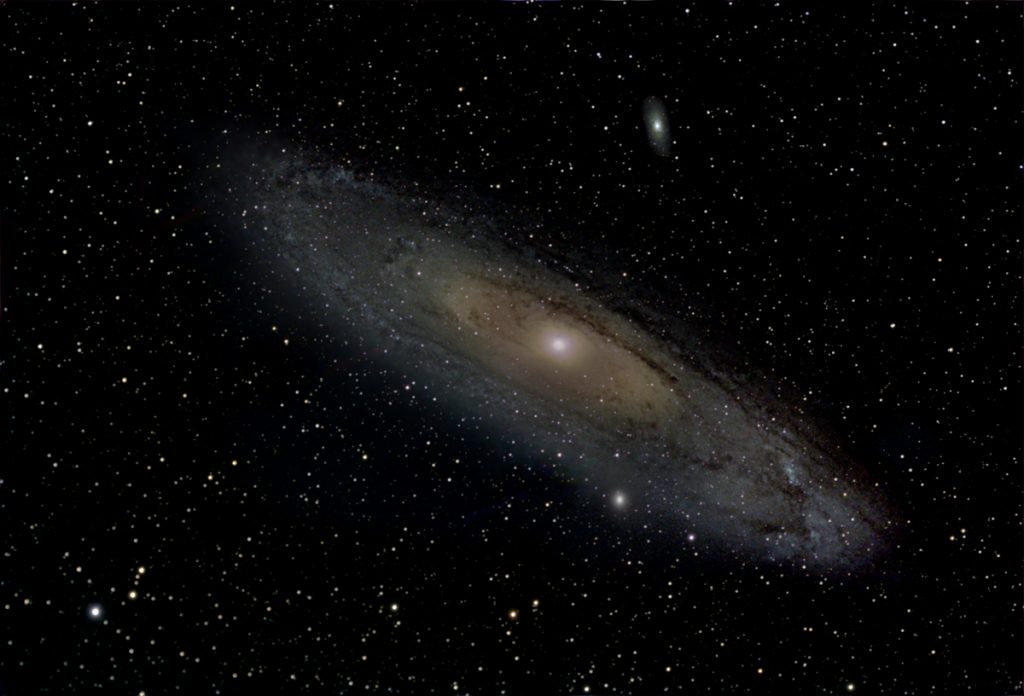OCTOBER 2022
Thoughts about my refractor telescopes
An article in the author’s Astronomy Digest – https://www.ianmorison.com
I love refractors – perhaps because they can, at least inprinciple, produce near perfect images. Over many years I have bought quite a number which now cover everypossible type of objective lens – the fundamental component of arefractor. This article describes thosethat I currently own and will, I hope, give some advice to those who areconsidering purchasing one in a less formal way than in the other refractorarticles in the digest.
An 80 mm refractor with an f/5 achromatic doublet.
I used to advise beginners not to acquire such a telescopeas they will show some false colour (chromatic aberration) around brightobjects such as the Moon and, if imaging, will give stars blue or magenta halosaround stars. I bought mine as a guidescope where this would not be a problem and could get somewhat cleaner imagesby incorporating a green filter to remove the outer ends of the visiblespectrum. It is of unknown make (Isuspect OpticStar) but is beautifully built with a 2 inch dual speed,rotatable, Crayford focuser.
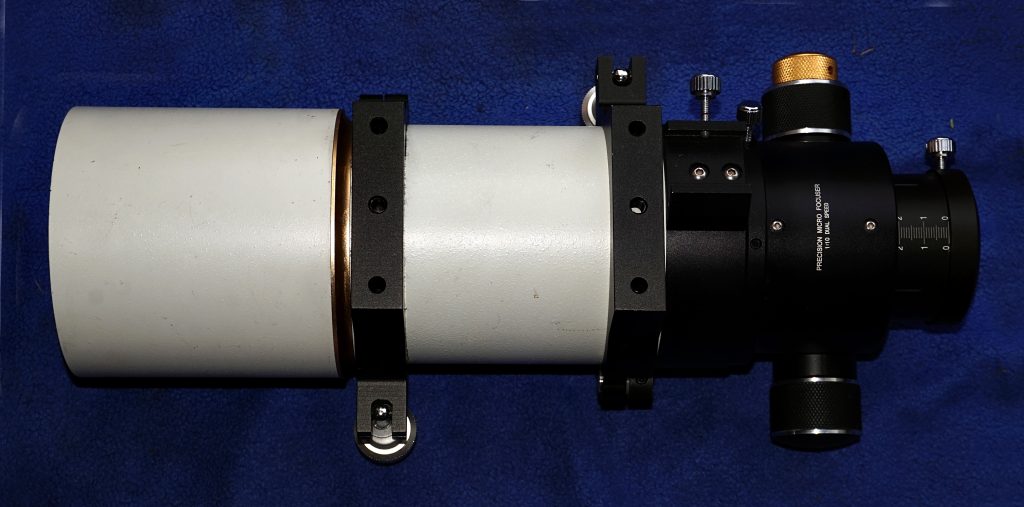
The design of achromat objectives has changed in recentyears. In the past, the colourcorrection was centred on the visible spectrum so that the red and blue ends ofthe spectrum would be equally out of focus – giving rise to the magenta colourfringing. It appears in more recentobjectives, as in this telescope, the correction has been shifted towards thered end of the spectrum so there will be less out of focus red light but theblue end of the spectrum will be well out of focus and so fairly faint as theblue light will be spread over a greater area and may not be so obvious whenvisual imaging.
In either case the chromatic aberration can be tamed by the use of a Baader ‘Fringe Killer’ filter which cuts of the extremes of the visible spectrum as seen in the image below. Equipped with one of these, such a telescope with its 400 mm focal length can give some really good wide field views of the heavens.
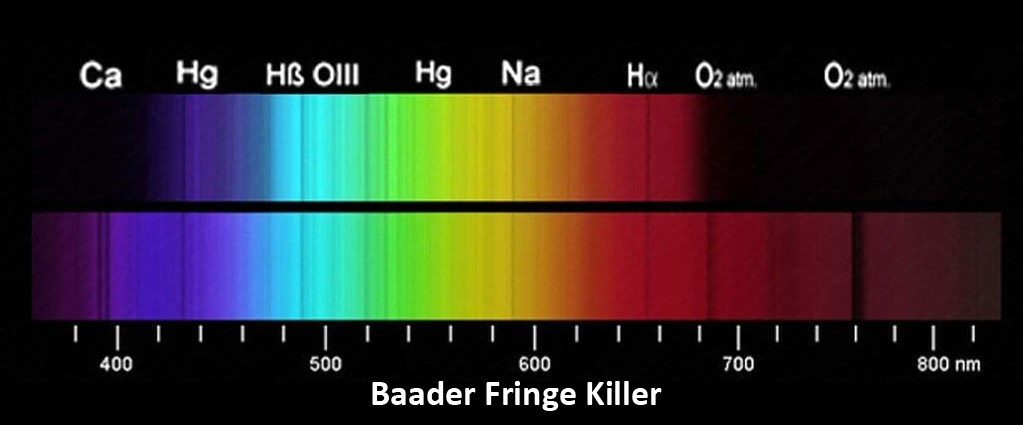
I have found a use for the telescope in solar imaging when away from home using a small mount. For ‘white light’ imaging I use a Baader Herschel Wedge which includes a narrow band, lime green, ‘Continuum Filter’ (hence no chromatic aberration) which enhances the Sun’s contrast. I can also use it with an H-alpha etalon and blocking filter to observe the Sun’s chromosphere.
This short, 400 mm, focal length has one very nice feature: with the 25 or 26 mm Plossl eyepiece that is usually provided with these telescopes, both M31, the Andromeda Galaxy, and M45, the Pleaides Cluster nicely fit into the field of view.
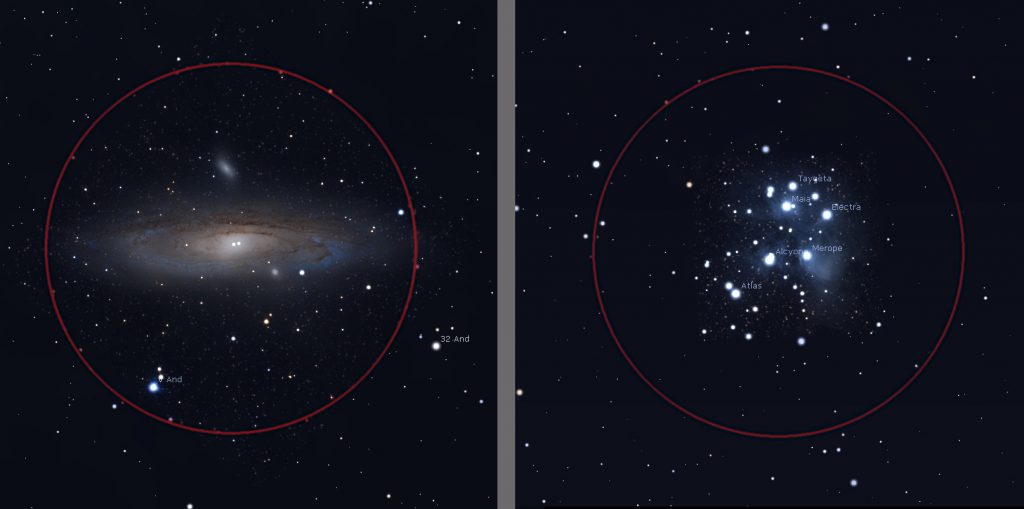
80mm f/6.25 Semi-Apo refractor.
This is quite a common 80 mm specification and is an Opticstar ED80S.This is no longer available but a virtually identical telescope, theStellarMira 80 ED f/6.5, can currently be bought from First Light Optics for£599 (a superb buy). The excellent construction of the Opticstar issimilar to that of the 80 mm achromat and appears to have the identical dual-speed,two inch focuser and gold edging. Intheir manual, Opticstar call it an ’80 mm f/6.25 Fluorite FPL-53 doublet’ andrefer to it as an apochromatic refractor. This latter statement is not strictly true which is why I headlined thissection as a Semi-Apo refractor. Virtuallyall manufacturers, as do StellaMira, use the apochromatic term for this classof objective and, using FPL-53 (or now FPL-55 *) ED glass for one element ofthe doublet objective will reduce chromatic aberration to very low levels closeto that of a true apochromat. Opticstar also use the term ‘Fluorite’ intheir description. Again this notstrictly true. As described in thesection below, there are doublets where one element is made out of FluoriteCrystal which has the lowest dispersion of any ‘glass’ type. However FPL-53 and FPL-55 are very close andmany manufacturers use the fluorite term for these ED elements andobjectives. For both visual andphotographic use, the results using one of these objectives will be very closeto that achieved with a true apochromat (at around twice the price) so Isuspect would be a better buy.
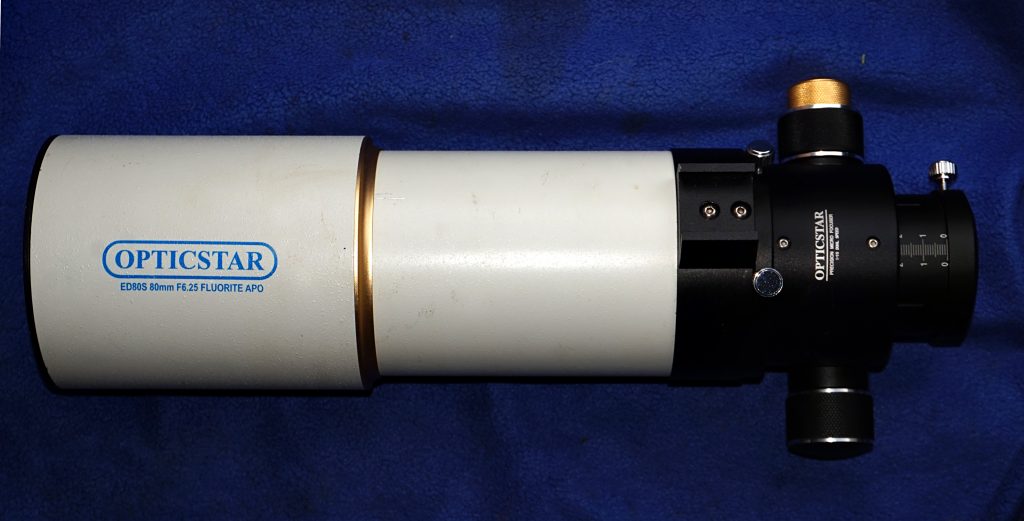
Some semi-apos use FPL-51 ED glass which will not give quite as goodcolour correction for a same focal ratiotelescope but is usually used intelescopes with somewhat longer focal ratios, say f/7 or f/7.5 rather than f/6,to give similar colour correction but having a smaller field of view.
A semi-apo telescope may show some false colour in out of focus imagesbut far less, if any, on focussed ones – where it matters. A true apo gives colour free images even asone racks through focus and is essentially colour free.
* FPL-53 is now being replaced by a ‘new’ glass, FPL-55. This is very close in performance to FPL-53but is said to be easier to work with. The glass’s dispersion is specified by the Abbe number; FPL-53 is about 94.93 and FPL-55 is 94.66 – anegligible difference. Fluorite crystallenses have an Abbe number of 94.99.
Two Fluorite Doublets
Takahashi FS102
These telescopes use one element of Fluorite crystal which is said to be harder to work with than glass. However, it does have a slightly lower dispersion than FPL-53 or FPL-55 glass and one really major asset. Being a crystal, light is not scattered as it traverses the element so a doublet objective including a fluorite element scatters the least light of any objective and so a refractor using a fluorite element has the highest overall contrast of any telescope type. This is born out by the image below taken with my Takahashi FS 102, f/8, telescope. This is possibly one of the best images of ‘Earthshine’ ever taken (as commented on by an ‘Astrophotographer of the Year’ winner) as the light from the illuminated part of the Moon has not ‘washed out’ those parts lit by earthshine.
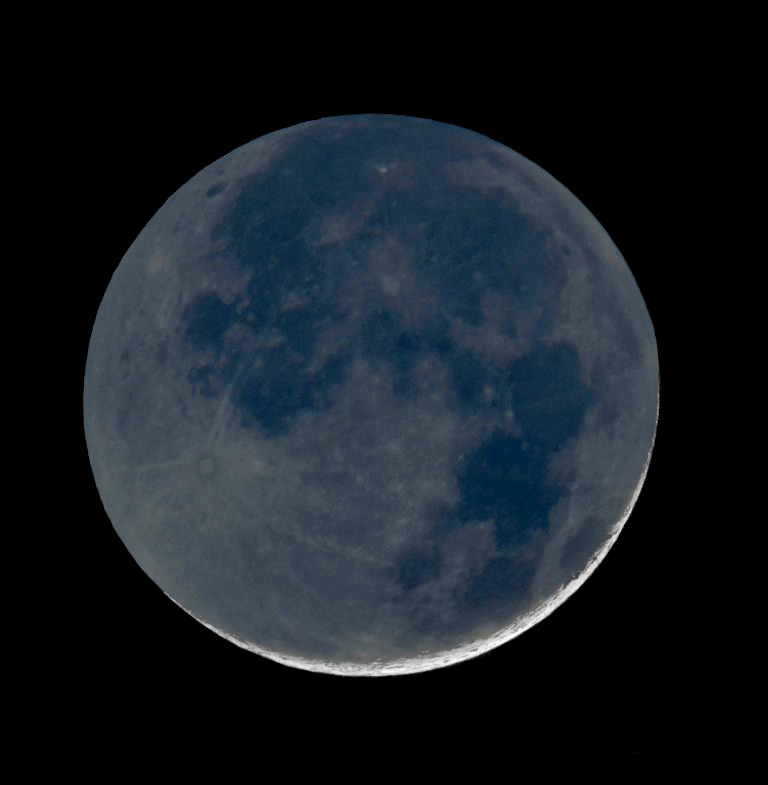
Bought in the year 2002, it is one of only two telescopes I have boughtnew (the other being the Cff Telescopes 127 mm refractor). One of a series of Fluorite doublets thenmade by Takahashi, this telescope has gained ‘cult status’ and is said to be one of the best refractors forvisual use ever made. The fact that ithas a relatively long focal ratio has helped to essentially eliminate chromaticaberration and it gives wonderful views of the planets. At a star party in 2003 when Mars becameclosest to the Earth for 60,000 years, its image was rated joint best out of~20 telescopes. It is currently thetelescope that I am using when home to take ‘continuum’ images of the Sun usinga ‘Baader Herschel Wedge’.
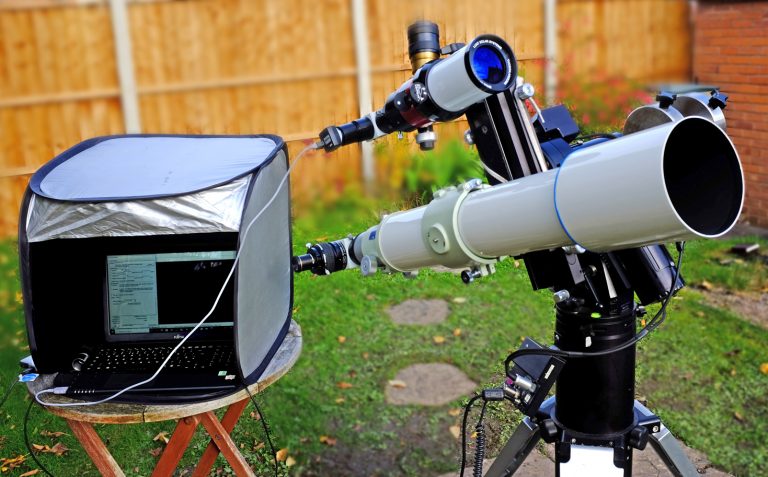
Takahashi FS60CB
This is the ‘Baby Tak’ regarded by some as a ‘little jewel’ of a telescope. Mine is equipped a 1.25 inch focuser. With a focal length of 355 mm and given a TeleVue 35 mm plossl – which has the largest apparent field of view of any 1.25 eyepiece – one has a visual field of view over 4 degrees across. The correction for chromatic aberration is not quite as good as some equivalent telescopes – but this is not too hard to correct for. It is a great telescope to take away on holiday mounted on a camera tripod and mine has also been used with a ‘correct image’ diagonal to produce a superb spotting scope for bird watching. Equipped with a Televue x0.8 reducer/flattener, as used in the Orion image below, it covers a full frame sensor with little vignetting making an excellent ‘digiscoping’ telescope.
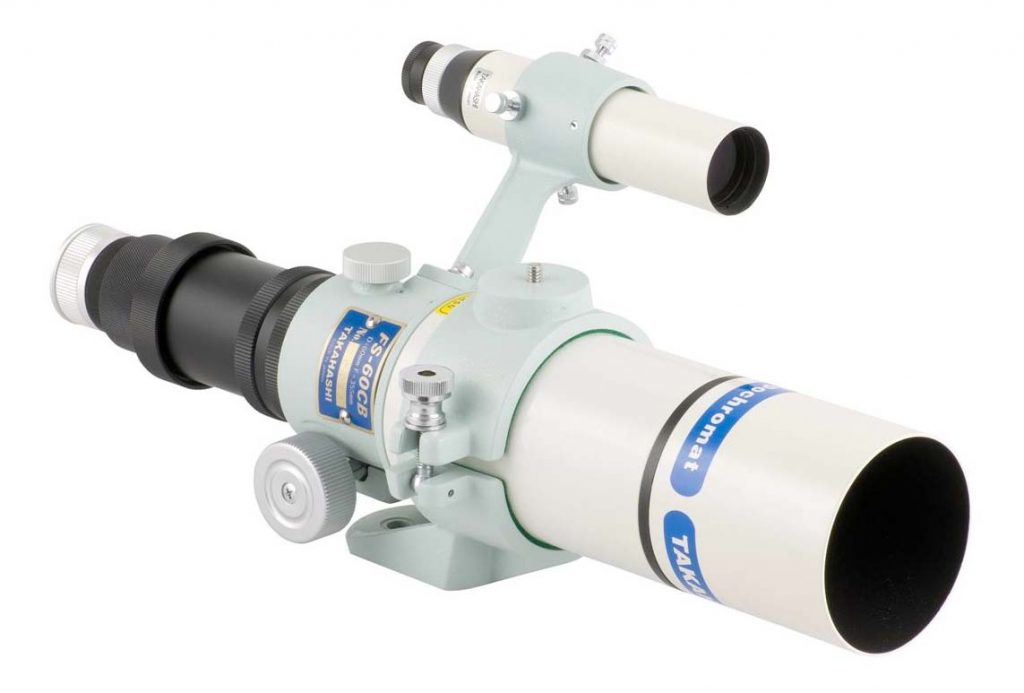
The image below was taken when coupled with a TeleVue x0.8 reducer/corrector and used with a full frame Sony A7II, 24 megapixel, camera to image the central region of the Orion constellation. I was somewhat amazed by the quality of the stellar images in the corners of the frame. The second image is a crop of the Orion Nebula region.
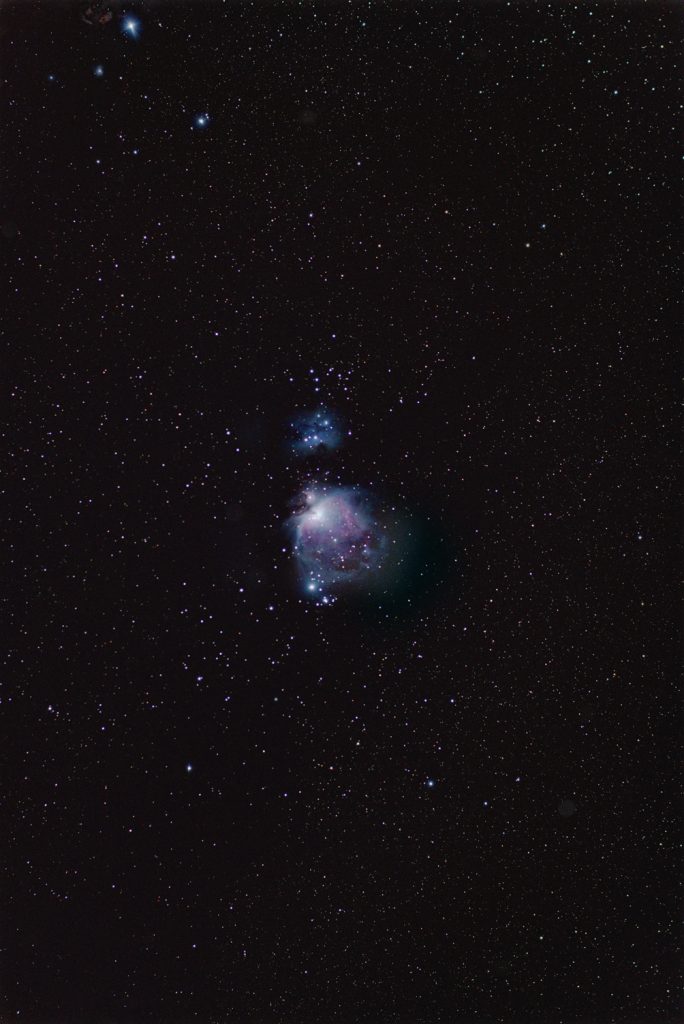
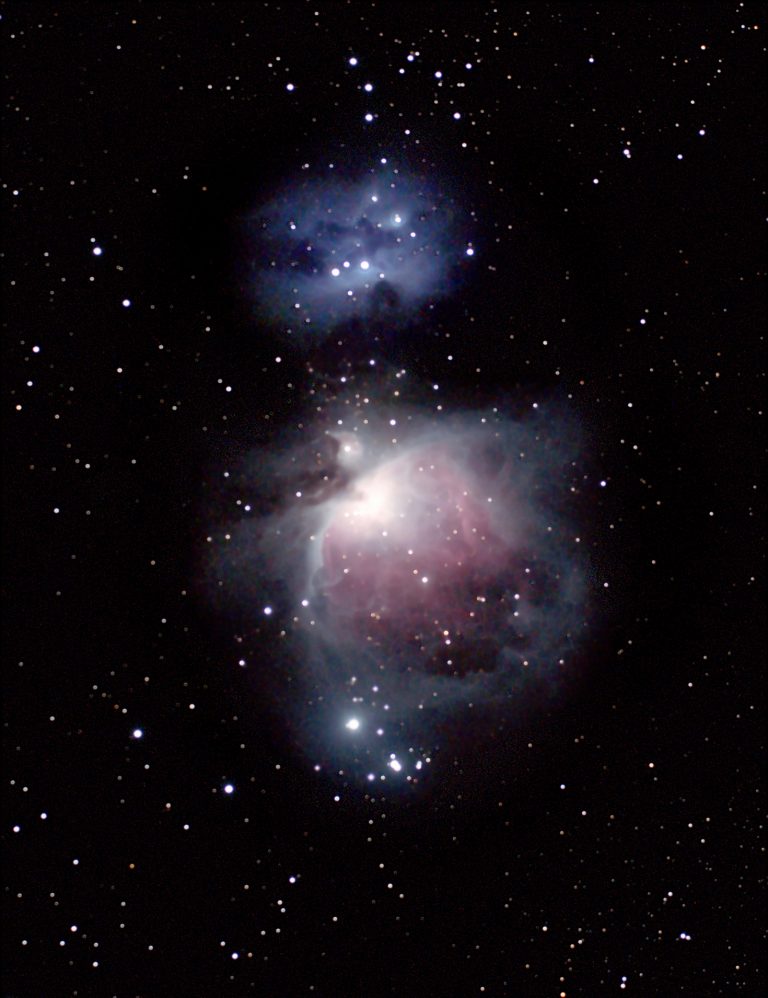
As mentioned above, second surprise was the low amount of vignetting when used with the TeleVue x0.8 focal reducer to image onto a full frame sensor. This is easily corrected by the use of flat frames of even with a vignetting correction in post processing.
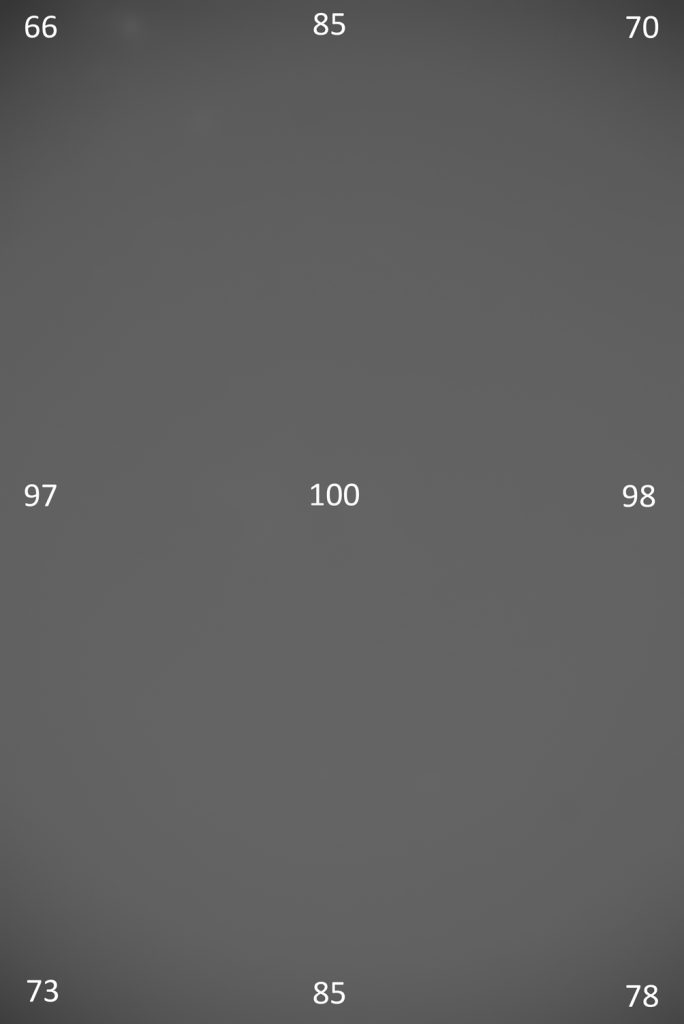
Digiscoping
An image taken with the FS60CB, Televue x0.8 reducer/flattener and Sony A7 II full frame camera.
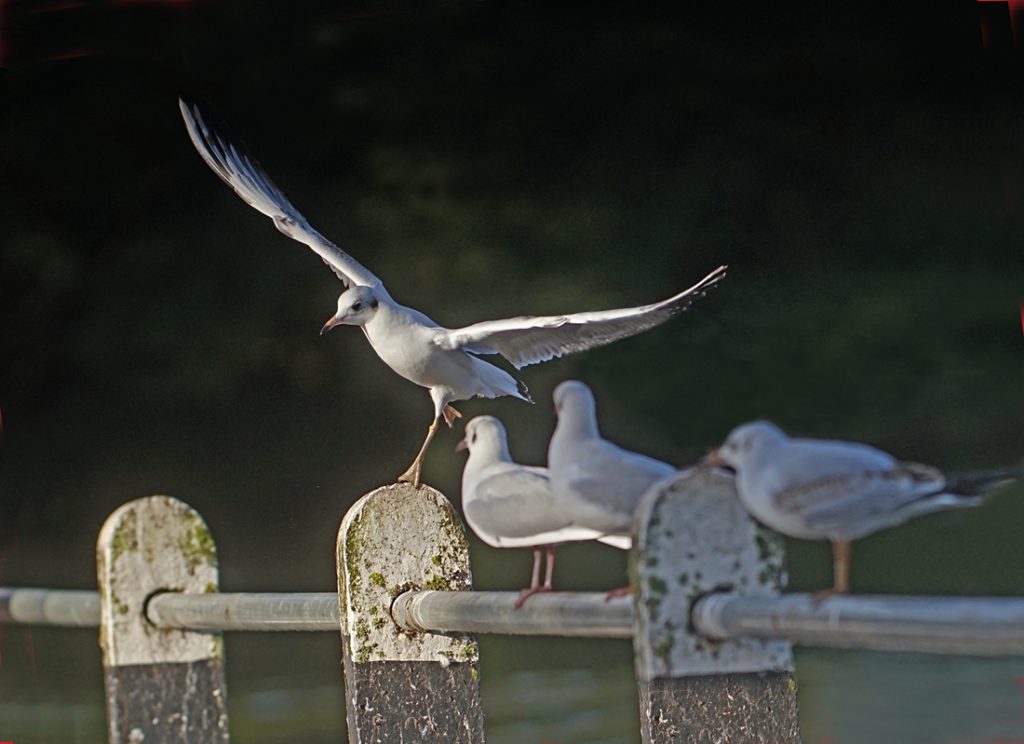
Apochromatic Refractors
Teleskop Service 90 mmf/6.6 apochromat
There is a detailed review of this telescope and the current versions in the digest. This is regarded as a true apochromat using a triplet objective with one element of FPL-53 glass. The objective quality is said to be comparable to the superb Russian LZOS objectives used in the APM-LZOS telescopes for example. [Due to sanctions, these lenses are no longer be being imported into Europe.]
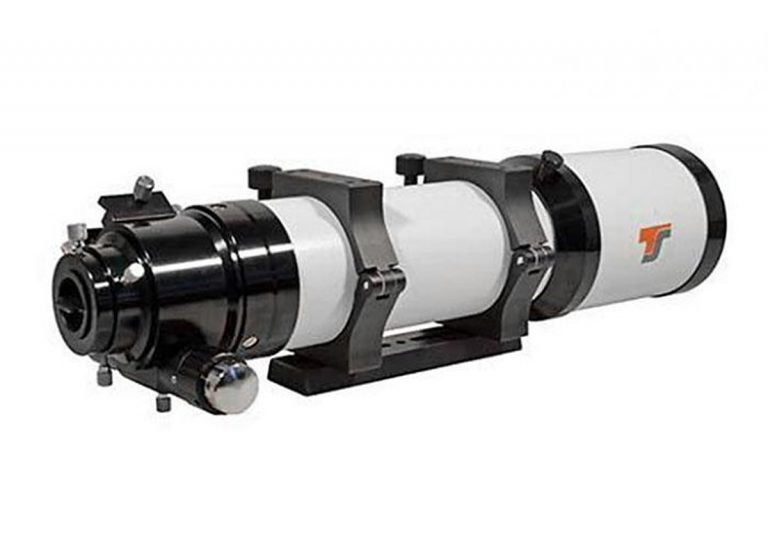
I am using it as my main ‘Get up and Go’ instrument to mount on my iOptron MiniTower computerised Az/Alt mount for use at star parties and outreach events. The image quality produced by the air spaced triplet objective is superb. The image below is of the Sun taken using a Herschel Wedge which, I think, shows off its image quality.
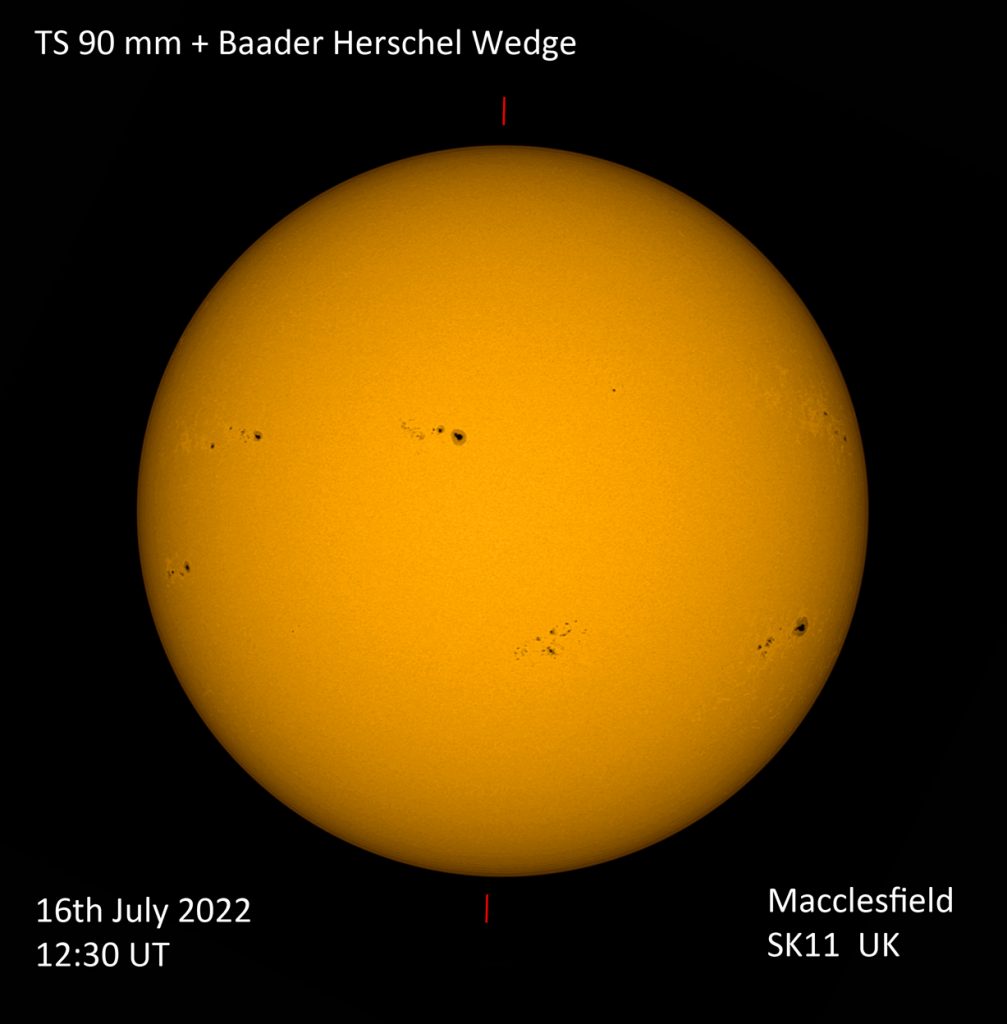
This was my ‘first light’ image with the telescope – imaged at full resolution in monochome mode (by mistake) and then in RGB mode at half resolution to provide a luminance and colour image (as in LRGB imaging) to provide a full resolution colour image. I think my best image of M42 to date.
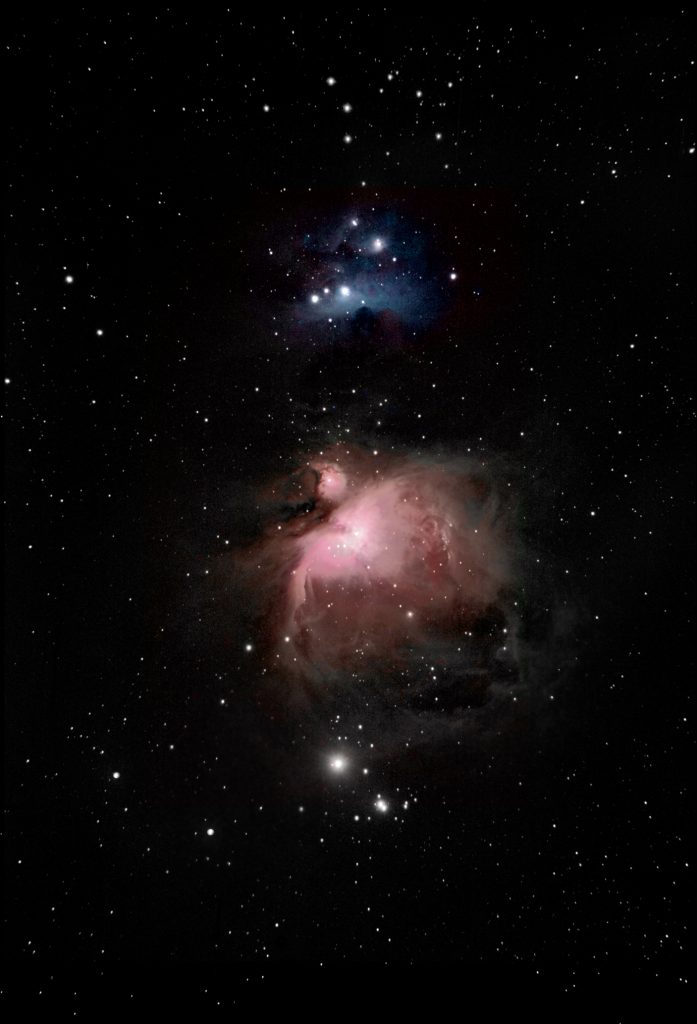
Cff Telescopes 127mm f/7apochromat
Some years ago, I hankered after a high quality apochromat refractor with a somewhat larger aperture and shorter focal ratio than my Takahashi FS102. One current example is the Altair Astro Altair Wave Series 130 F7 ED Triplet APO at around £2,500. In 2008, I had become aware of a new company named Cff (Coma Free Field) Telescopes. The mechanical elements of all telescopes are made in Poland, designed by Cătălin Fus – the company founder and mechanical designer – and the oil-spaced triplet refractor optics are made in Hungary, designed and assembled by Pal Gyulai (formerly GPU Optical). I was able to purchase the last of the first run of 127 mm aperture telescopes for what was – in comparison to now – a very reasonable price. The mechanical construction is of the highest level and includes the use of a 2.5 inch Starlight Instruments Feather Touch focuser – one of the world’s best.
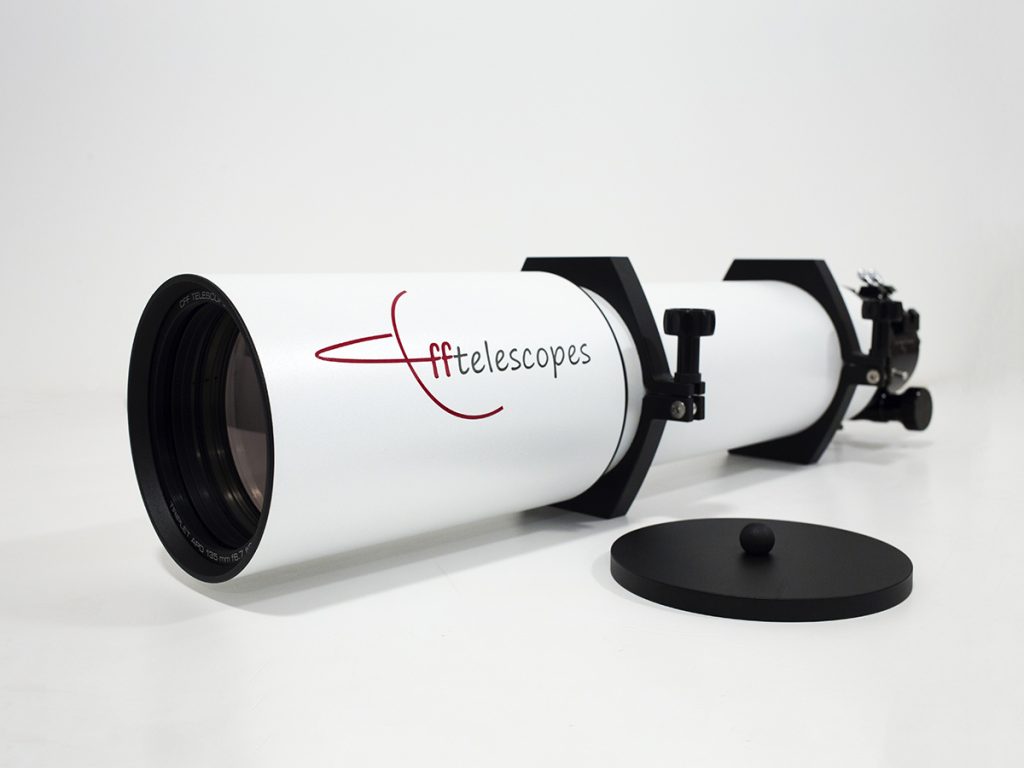
It is worth comparing aspects of the oil-spaced objective used in the Cffrefractors with the more common air spaced triplets. In an air spaced triplet the optical designercan adjust the radii of curvature of the two surfaces of all three elements so giving6 degrees of freedom. This, coupled withthe ability to choose the separations between the elements, gives him twofurther degrees of freedom, makes optimising of a design relatively easy. In the case of a oil spaced triplet there areonly 4 degrees of freedom (the radii of curvature of the outer and innerelement surfaces as those of the inner element are then determined). The spacings are obviously fixed to bezero. It is often the case that toachieve similar image quality one lens surface may need to be made aspherical. One might then wonder why one should designoil spaced triplets. There are threeadvantages. Firstly, due to the oillayers between the elements, the only significant light reflection can be fromthe final internal lens surface whereas in an air spaced triplet there are fiveinternal glass air interfaces within the lens. [For some time, Astro-Physics, offered some of their telescopes witheither air or oil spaced objectives. They recommended the oil spaced version as they said that 6% more light was transmitted by thelens. I suspect that some of that 6%will be scattered and reduce the overall contrast very slightly.] Secondly, the oil layers will fill any minorblemishes in the internal lens surfaces so greatly reducing any impact thatthey might have. (In the same way that athin layer of oil on a rough surface effectively smoothes it.) These help produce a better objective. The third, and perhaps the most importantreason is to do the lens elements reaching ambient temperature when brought outto observe. The internal element of anair spaced objective has air on both sides which limits the rate at which itcan lose heat so these must be bought out into the open to acclimatisesooner. It can be worse than this as, ifthe night is cooling quickly, the central element may never reach ambienttemperature.
Over the intervening years, the reputation of Cff telescopes has grown and is now regarded as one of the world’s very best refractor manufactures – comparable to Astro-Physics – and, like them, long waits may be needed to acquire a new one. The current cost of their refractor closest to mine in specification is of order £7,000! This scope has very largely been used for visual observing, but I have both a TS 2 inch field flattener and a TeleVue x0.8 focal reducer/flattener to use it for astrophotography.
The image below is of the Moon as I was awaiting M81 and M82 to rise. The Cff 127mm, f/7, refractor was used with a Point Grey Chameleon webcam and infrared filter. (The atmosphere has less effect in the infrared.) It has been sharpened using deconvolution sharpening in Images Plus.
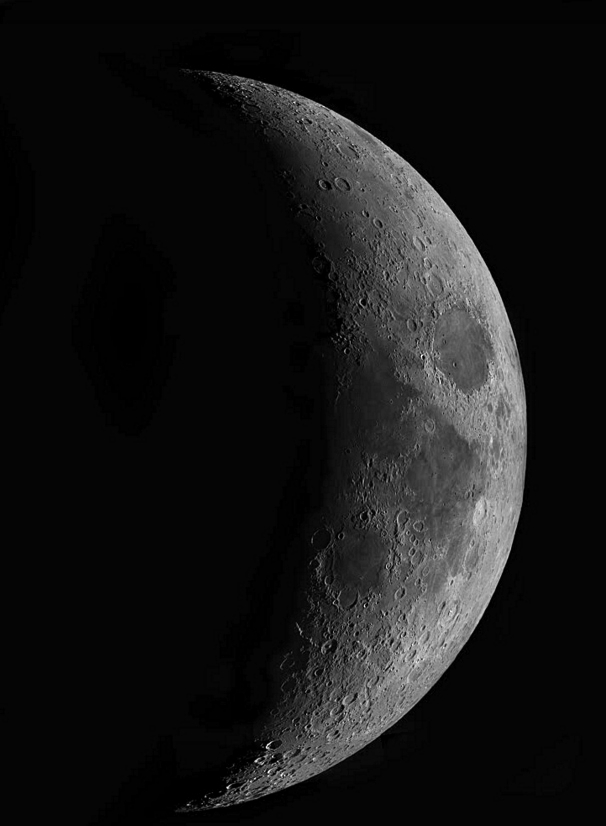
This image is of M82, Bodes Galaxy, and M82, the Cigar Galaxy, using the Cff 127 mm, f/7, refractor coupled with the TS 2 inch field flattener and APS-C cooled CCD camera.
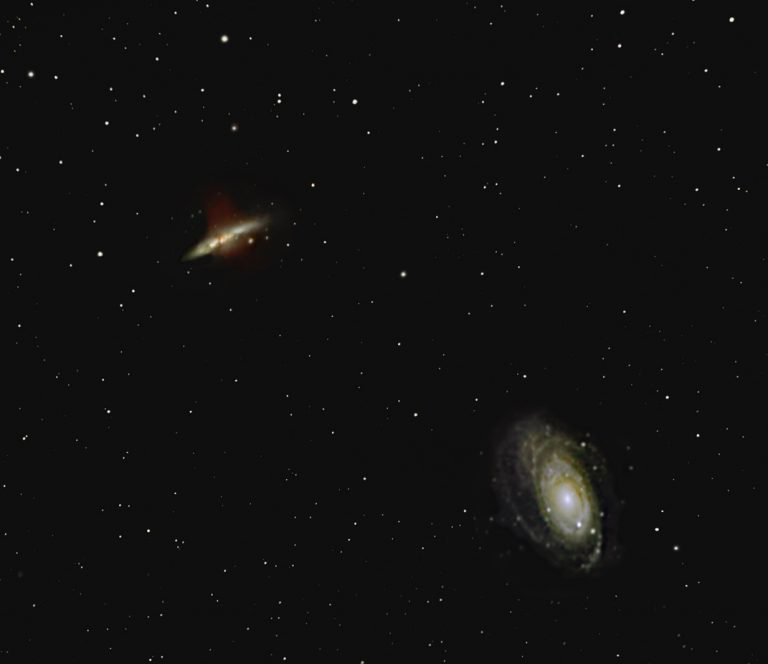
Using the telescope with a TeleVue x0.8 reducer/flattener for 800-1000 mm focal length refractors the focal length is reduced to 711 mm and the focal ratio to f5.6.
The TS Imaging Star 65mm f/6.5 astrograph
The word astrograph implies that it is a refractor that is meant to beused for astroimaging – giving a wide, fully corrected, flat field of view. This can be achieved in several ways; Televuefor example use a ‘Petzval’ system of two doublets, one as the objective andone towards the rear of the tube assembly. My telescope – which is fully reviewed along with its later variants inthe digest – uses an air spaced triplet as the objective (including one elementof FPL-53 glass) along with a further single element field flattener part waydown the tube assembly.
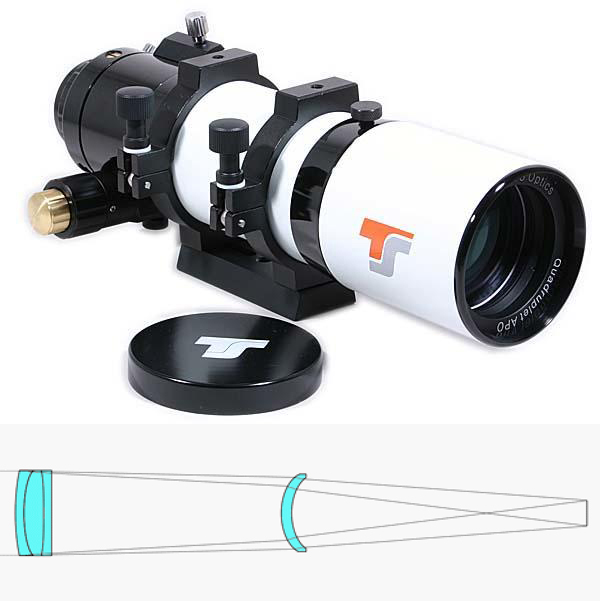
The image below is of M87, (Virgo A), at centre and Markarian’s Chain of galaxies over to the right.
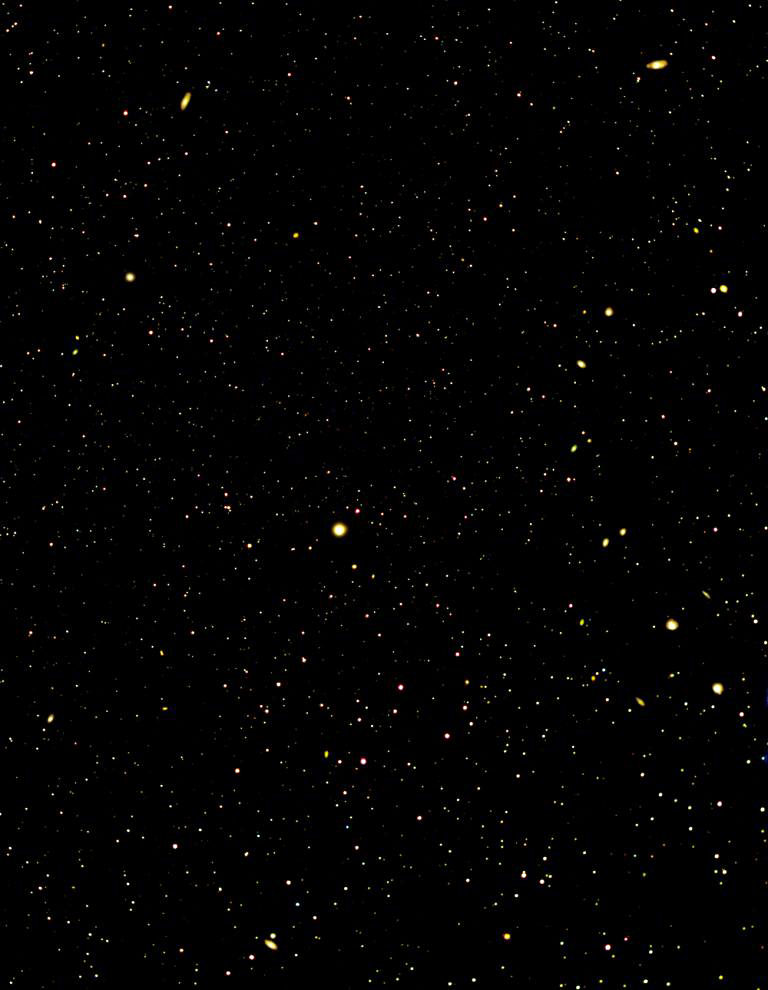
The Andromeda Galaxy, M31 along with M32 (below) and M110 (above).
